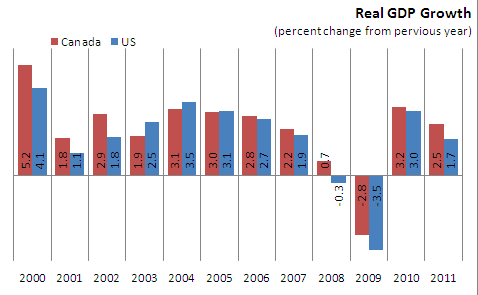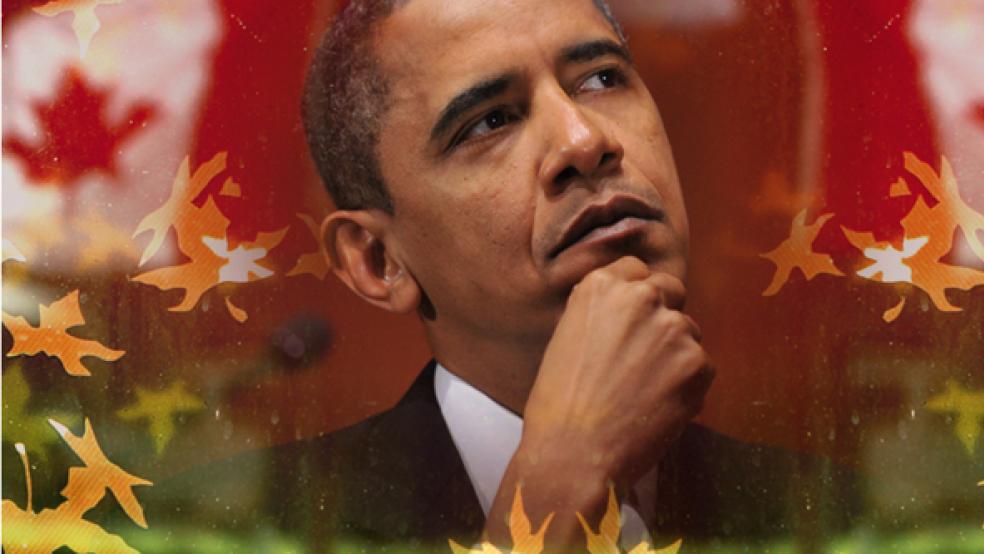When President Obama nixed the Keystone Pipeline, Canada’s Prime Minister Stephen Harper moved aggressively on the alternative Northern Gateway Pipeline. The project would involve billions of dollars to construct two pipelines to British Columbia and a new port to service Asia-bound supertankers. It would also create thousands of jobs. Harper’s aggressive push for jobs and Obama’s cave to environmentalists perfectly describes the chasm between Canadian policies and ours. Guess which are working better?
Leaders of the developed world are being bounced left and right. Though circumstances and details differ, the message is clear: People are tired of worrying about the economy, their jobs and their future. They hold the folks in charge accountable and will not reelect a leader who has failed to ease their concerns.
RELATED: Jobs: Still Obama’s Biggest Election Hurdle
Mr. Obama is just such a leader. He has shown neither a clear understanding about what might help job creation nor has he made this overarching concern his highest priority.
Recent polls show the president is in trouble; he needs a plan. My advice: Take a hard look at Canada to study up on what our northern neighbor is doing right.
Canada may be as bland as butter tart, but the country’s economy has been anything but. From 2001 through 2010, it grew faster than any other G-7 country and, alone in that group, it quickly recouped the employment and production losses suffered during the recession. Unemployment today is just over 7 percent – lower than in most developed countries. Though the government’s popularity has sagged with budget cuts of late, Prime Minister Harper continues to enjoy high approval ratings.
Canada’s growth was not built on financial wizardry -- the country boasts some of the soundest banks on earth. (A recent report has accused the government of providing local banks with a “secret” bailout; there was apparently some temporary extension of liquidity at the height of the panic to keep credit flowing, but since then the loans from the government have been repaid.) Nor did it stem from reckless government spending. Chastened by a fiscal crisis in the 1990s, the country cut spending and posted 11 consecutive budget surpluses pre-recession. Consequently, Canada was able to enact a sizeable stimulus program without upending its fiscal stability. That’s how it’s supposed to work.

Source: Government of Nova Scotia
Canada’s net debt to GDP in 2008 was the lowest in the G-7 at 22.6 percent; the U.S. figure for that year was 53.7 percent. Thanks to its stimulus effort, Canada’s debt rose but is estimated to peak at 37.5 percent in 2014, and then decline. By contrast, U.S. debt to GDP in 2014 is projected by the IMF to be 88 percent and rising for the foreseeable future. That’s why Republicans in Congress are so cranky.
Some may dismiss the Canadian experience as pertinent only to a small country. But Canada is the tenth largest economy in the world – bigger than India or South Korea. No, the Canadian lesson is applicable to the U.S. and it is also simple. Some years ago, Canada set out to attract businesses large and small and it has succeeded.
It starts with taxes. In the past several years, Canada’s federal corporate tax rate was cut five times; the most recent reduction was in January of this year, when it dropped to 15.0 percent. Together with a provincial tax of 10 percent, the combined corporate tax for Canadian companies is the lowest among the G-7 nations. In the past decade, most developed countries have engaged in a race to the (tax) bottom, with the average OECD rate tumbling six percentage points. Over that period, the U.S. rate barely moved – from 39.3 percent to 39.2 percent. It is true that not all American companies pay taxes at levels that high; but the high rate and complexity of our code is widely viewed as uncompetitive. Also damaging our position, the U.S. is the only OECD country to tax profits earned abroad.
In addition, Canada boasts the lowest tax rate on new business investments in the G-7; the lowest overall business costs, according to accounting giant KPMG; a tariff-free zone for machinery imports; R&D tax credits; low import tariffs; excellent infrastructure and superb educational opportunities. The upshot of all these efforts? A doubling of foreign direct investment in Canada over the past decade, an inflow more than twice that moving to the U.S.
It is notable that corporate tax revenues increased during this period, despite the rate reductions. Though there was a recession-induced hit in 2008, revenues quickly rebounded to levels above those taken in under the more onerous tax regime.
U.S. business leaders would be the first to say it’s not all about taxes. In its Global Competitiveness Report, the World Economic Forum (WEF) rates Canada’s education among the top ten countries in the world and its infrastructure fifteenth. Canada’s government has aggressively sought free trade agreements, concluding eight in the past few years.
The United States, ranked fifth, still outperforms twelfth-place Canada in the overall WEF listings of global competitiveness. As recently as 2005, however, our nation led the world; its score drop in the most recent edition was the largest of any of the 113 countries studied. Canada’s score increased modestly.
A panel of international business leaders at the Milken Global Institute Conference on the West Coast recently concluded: “No one has won the next ten years yet.” All countries face challenges – even China. The United States needs to join the race, embracing the private sector and rebuilding our country’s finances – just like Canada. Unfortunately, President Obama’s attentions are on a different race. Even worse, he still doesn’t get it that these two competitions are inextricably linked.






